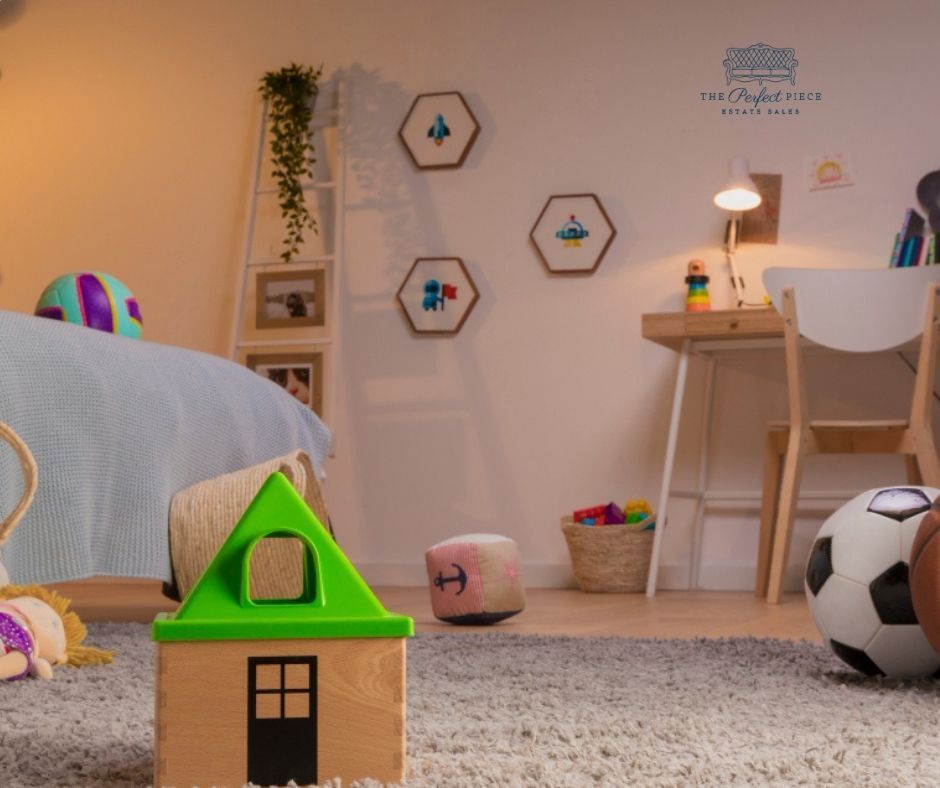Kids’ Room Organization: Teaching Organization Skills Young Age
Kids’ room organization isn’t just about keeping the space tidy; it’s about instilling valuable life skills from an early age.
As children grow, their surroundings play a crucial role in shaping their habits and behaviors.
By teaching organization skills from a young age, parents and guardians can empower their children to lead more structured, efficient lives while fostering a sense of responsibility and independence.
In today’s fast-paced world, the ability to stay organized is more important than ever.
For children, learning organization skills isn’t just about tidying up—it’s about developing habits that will serve them well throughout their lives.
From improving focus and productivity to reducing stress and anxiety, the benefits of an organized environment extend far beyond just having a neat room.
Benefits of Organized Spaces for Kids
An organized space provides more than just visual appeal; it offers a conducive environment for learning, playing, and relaxing.
When children know where things belong and can easily find what they need, they experience the following:
Mental clarity and focus: A clutter-free environment promotes concentration and reduces distractions, allowing children to focus better on tasks and activities.
Enhanced productivity and efficiency: With everything in its place, children can accomplish tasks more efficiently, leading to a greater sense of accomplishment and productivity.
Reduced stress and anxiety levels: A tidy space promotes a sense of calm and control, helping children feel more relaxed and less overwhelmed by their surroundings.
Setting the Foundation: Start Early
The key to a successful organization lies in starting early.
Even toddlers can begin learning basic organization concepts, such as putting toys back in their designated bins or baskets after playtime.
By incorporating organization into daily routines from a young age, parents lay the groundwork for lifelong habits of tidiness and orderliness.
Introducing organization concepts to toddlers: Start by teaching simple tasks like picking up toys and putting them away. Use clear, age-appropriate instructions and praise their efforts.
Incorporating organization into daily routines: Make tidying up a part of everyday activities, such as cleaning up before bedtime or before transitioning to a new activity.
Leading by example as parents or guardians: Children learn by observing the behavior of adults around them. By modeling organized habits and routines, parents can set a positive example for their children to follow.
Creating Functional Zones
One effective strategy for maintaining an organized kids’ room is to create distinct functional zones for different activities.
By designating specific areas for play, study, and relaxation, children can better understand the purpose of each space and learn to keep them organized accordingly.
Designating areas for different activities: Divide the room into zones based on activities such as play, study, and sleep. Use rugs, furniture, or visual markers to delineate each zone.
Utilizing storage solutions to keep zones clutter-free: Invest in storage solutions such as bins, shelves, and baskets to keep toys, books, and other items organized and easily accessible.
Teaching children to respect the boundaries of each zone: Encourage children to play and study in their designated areas, emphasizing the importance of keeping each zone tidy and free from clutter.
Decluttering Strategies
Clutter can quickly accumulate in a child’s room, making it challenging to stay organized.
Teaching children how to declutter effectively not only helps keep their space tidy but also cultivates decision-making skills and a sense of responsibility for their belongings.
Involving children in decluttering decisions: Encourage children to participate in decluttering activities by sorting through their belongings and deciding what to keep, donate, or discard.
Implementing the “keep, donate, discard” rule: Teach children to evaluate each item and determine whether it serves a purpose or brings them joy.
Items that are no longer needed can be donated or discarded.
Making decluttering a regular practice: Schedule regular decluttering sessions to prevent clutter from accumulating.
Set aside time each season to review and organize toys, clothes, and other items.
Storage Solutions
Practical storage solutions are essential for maintaining an organized kids’ room.
By providing designated storage spaces for toys, books, clothes, and other items, parents can help children learn how to keep their belongings organized and easily accessible.
Utilizing age-appropriate storage solutions: Choose storage bins, shelves, and containers that are easy for children to use and access independently.
Opt for durable materials that can withstand the wear and tear of daily use.
Teaching kids how to organize their belongings: Show children how to categorize and arrange their belongings within designated storage spaces.
Use labels or picture labels to help them identify where each item belongs.
Implementing labeling systems for easy identification: Label storage bins and containers with words or pictures to help children identify what goes where.
This not only makes it easier for them to find what they need but also encourages literacy and organization skills.
Maximizing Space in Small Rooms

In smaller rooms, maximizing space is critical to maintaining organization and creating a functional, clutter-free environment.
With strategic planning and creative solutions, even the smallest of rooms can be transformed into organized and efficient spaces for children to play and relax.
Utilizing vertical space with shelves and wall-mounted storage: Install shelves and wall-mounted storage units to take advantage of vertical space and free up floor space for play and movement.
Investing in multi-functional furniture: Choose furniture pieces that serve multiple purposes, such as beds with built-in drawers or desks with storage compartments.
This helps maximize storage while minimizing clutter.
Utilizing under-bed storage and closet organizers: Make use of under-bed storage bins or drawers to store seasonal clothing, bedding, or bulky items.
Install closet organizers such as shelves, hanging organizers, and shoe racks to maximize closet space and keep clothes and accessories neatly organized.
Daily Maintenance Habits
Incorporating daily maintenance habits into children’s routines is essential for maintaining an organized kids’ room in the long term.
By teaching children to take responsibility for their belongings and tidy up regularly, parents can instill valuable habits that will serve them well into adulthood.
Encouraging tidying up before bedtime: Make tidying up part of the bedtime routine by having children put away toys, books, and other items before going to bed.
This not only keeps the room tidy but also sets a positive tone for the next day.
Implementing a “five-minute tidy” routine: Set aside five minutes each day for a quick tidy-up session.
Encourage children to pick up stray toys, clothes, and other items and put them back in their designated places.
Teaching responsibility for personal belongings: Help children understand the importance of taking care of their belongings by assigning specific tasks and responsibilities related to room organization.
Please encourage them to take pride in keeping their space clean and tidy.
Incorporating Fun into Organization
Organization doesn’t have to be boring; in fact, it can be a fun and rewarding experience for children.
By turning organized tasks into games or challenges, parents can make tidying up more engaging and enjoyable for children while teaching valuable skills in the process.
Turning organization tasks into games or challenges: Create fun games or challenges around tidying up, such as a race to see who can pick up the most toys the fastest or a scavenger hunt to find items that need to be put away.
Rewarding children for maintaining an organized space: Offer incentives or rewards for keeping their room tidy, such as extra playtime, special privileges, or small treats.
Positive reinforcement can motivate children to take ownership of their space and develop a sense of pride in keeping it organized.
Encouraging creativity in organizing their room: Encourage children to express their creativity and individuality in organizing their rooms.
Offer suggestions and guidance, but ultimately let them make decisions about how to arrange their belongings in a way that makes sense to them.
Teaching Time Management Skills
Organization extends beyond physical spaces and encompasses managing time effectively. By teaching children how to plan, prioritize, and manage their time, parents can help them become more independent and responsible individuals.
Establishing routines and schedules: Create daily routines and schedules for activities such as homework, playtime, and chores.
Consistency helps children develop a sense of structure and predictability.
Using visual aids such as calendars and clocks: Introduce visual aids such as calendars, clocks, and timers to help children understand the passage of time and manage their schedules effectively.
Teaching the importance of prioritization and planning: Encourage children to prioritize tasks based on importance and urgency.
Teach them how to break larger tasks into smaller, manageable steps and plan their time accordingly.
Addressing Resistance and Challenges
While teaching organizational skills is beneficial, children are not always enthusiastic about it. Parents may encounter resistance or challenges along the way, but with patience and persistence, they can help children overcome obstacles and develop positive habits.
Understanding common reasons for resistance to the organization: Children may resist the organization for various reasons, such as feeling overwhelmed, lacking motivation, or wanting to assert independence.
Strategies for overcoming challenges and setbacks: Tailor organization strategies to suit children’s individual preferences and needs.
Break tasks down into smaller, more manageable steps, and offer encouragement and support along the way.
Encouraging persistence and resilience: Emphasize the importance of perseverance and resilience in the face of challenges.
Celebrate small victories and milestones to boost children’s confidence and motivation.
Getting Kids Involved in Room Design
Involving children in the design and layout of their room not only fosters a sense of ownership and pride but also encourages them to take responsibility for maintaining an organized space.
Allowing children to have a say in room layout and decor: Solicit children’s input when decorating or rearranging their room.
Let them choose colors, themes, and decor elements that reflect their interests and personality.
Incorporating their interests and preferences into the design: Whether it’s a favorite color, hobby, or character, include elements that resonate with children’s interests and preferences.
This creates a space where they feel comfortable and happy.
Teaching the importance of functionality alongside aesthetics: While aesthetics are important, emphasize the importance of functionality and practicality in room design.
Encourage children to consider how they will use the space and prioritize elements that contribute to organization and efficiency.
Leading by Example
The most powerful way to teach organizational skills to children is by leading by example. When parents model organized habits and routines in their own lives, children are more likely to emulate these behaviors and internalize the value of the organization.
Demonstrating organizational skills in daily life: By staying organized in your daily routines and activities, you can let children see you practicing what you preach.
Whether it’s keeping a tidy workspace or maintaining a clutter-free home, be a positive role model for the organization.
Involving children in household chores and organization projects: Assign age-appropriate chores and tasks to children and involve them in household organization projects.
This not only teaches practical skills but also instills a sense of responsibility and contribution.
Modeling positive attitudes toward organizations: Approach organizations with a positive attitude and mindset, emphasizing their benefits and importance.
Avoid making the organization feel like a chore or punishment; instead, frame it as a positive and empowering practice.
Celebrating Progress and Milestones
Recognizing and celebrating achievements in the organization can reinforce positive habits and motivate children to continue their efforts.
Recognizing and celebrating achievements in organization: Acknowledge and praise children’s efforts in maintaining an organized space.
Celebrate milestones such as completing a decluttering project or consistently following a daily tidy-up routine.
Setting goals and milestones for improvement: Work with children to set realistic goals and milestones for improving organization skills.
Break larger goals down into smaller, achievable steps and celebrate each milestone along the way.
Building confidence and self-esteem through positive reinforcement: Use positive reinforcement, such as praise, encouragement, and rewards, to reinforce desired behaviors and build children’s confidence and self-esteem.
Conclusion
Teaching organization skills to children from a young age is an investment in their future success and well-being.
By creating organized and functional spaces, involving children in the process, and modeling positive behaviors, parents can empower their children to become independent, responsible, and confident individuals.
Through patience, consistency, and encouragement, parents can lay the foundation for a lifetime of organization and success.
FAQs
At what age should I start teaching my child organization skills?
It’s never too early to start! You can introduce basic organization concepts to toddlers and gradually increase their responsibilities as they grow older.
How can I motivate my child to keep their room tidy?
Find what motivates your child, whether it’s praise, rewards, or turning tidying up into a game. Also, lead by example and make the organization a positive and fun experience.
What are some effective decluttering strategies for children’s rooms?
Involve your child in the decluttering process and use the “keep, donate, discard” rule. Break tasks into smaller, manageable steps and make decluttering a regular practice.
What storage solutions work best for organizing children’s belongings?
Age-appropriate storage solutions like bins, shelves, and baskets are ideal. To maximize space, consider utilizing vertical space, under-bed storage, and multi-functional furniture.
How can I help my child manage their time better?
Establish routines and schedules, use visual aids like calendars and clocks, and teach prioritization and planning skills to help your child manage their time effectively.
What should I do if my child resists organization efforts?
Understand the reasons behind their resistance and tailor your approach accordingly. Break tasks into smaller steps, offer incentives, and model positive attitudes towards the organization.
How can I involve my child in the design of their room?
Invite your child to share their ideas and preferences for room decor and layout. Please encourage them to express themselves creatively while balancing aesthetics with functionality.
What role do routines play in teaching organizational skills?
Routines provide structure and consistency, helping children develop habits and routines that support organization. Consistent tidying up before bedtime, for example, can instill lifelong habits of cleanliness.
How can I teach my child to prioritize tasks effectively?
Help your child understand the importance of prioritization based on urgency and importance. Break tasks down into smaller, manageable steps and guide them in allocating time accordingly.
What are some strategies for celebrating my child’s progress in the organization?
Acknowledge and praise their efforts, celebrate milestones such as completing a decluttering project or mastering a new organizational skill, and use positive reinforcement to build their confidence and self-esteem.
The post Kids’ Room Organization: Teaching Organization Skills Young Age appeared first on Perfect Piece.











